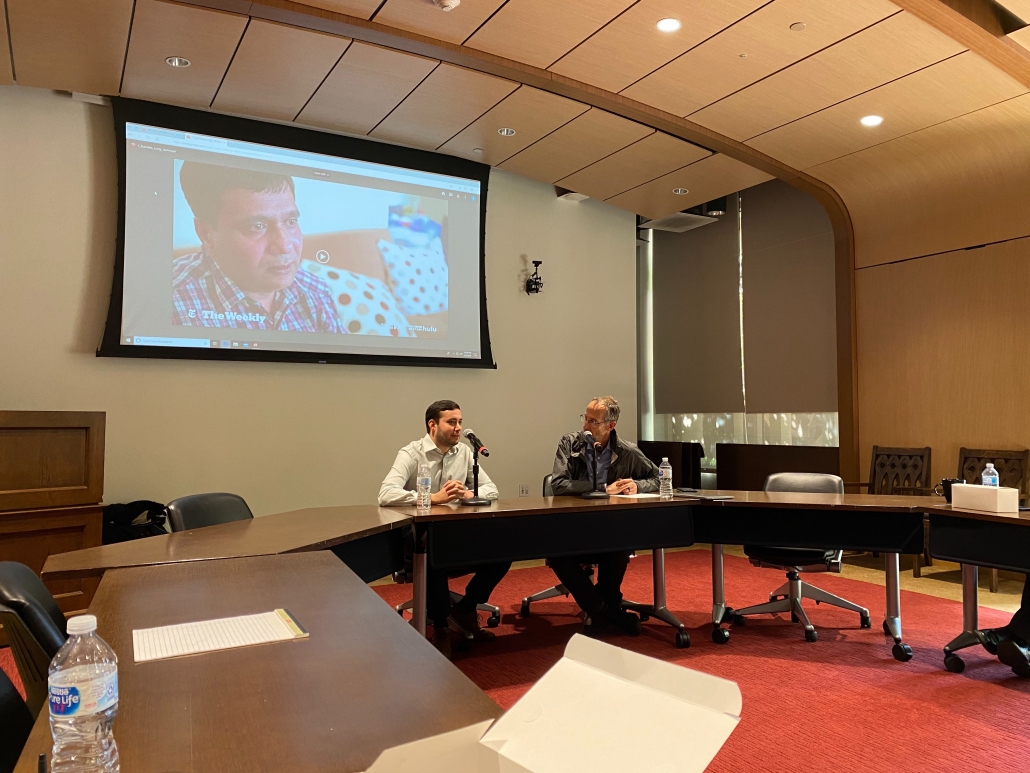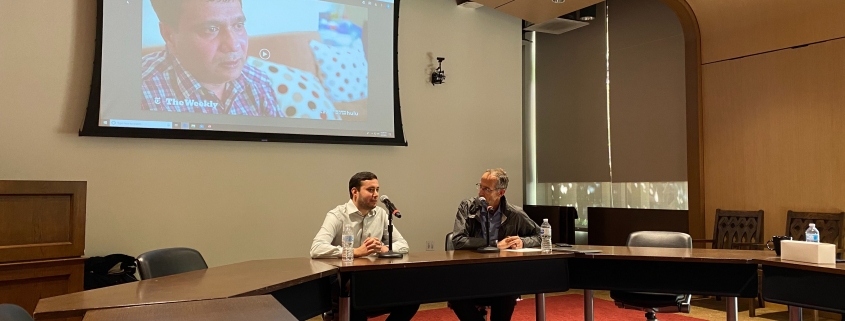Reporter discusses US probe

It took 18 months and 400 pages of notes and research, New York Times reporter Brian Rosenthall told the more than 30 students and faculty members who gathered in Wallis Annenberg Hall Monday to learn about his investigation into the New York taxi medallion scandal. At the event, moderated by journalism professor Mark Schoofs, Rosenthal walked attendees through his discovery that New York City earned $855 million from selling taxi medallions through predatory lending, which led eight taxi drivers to commit suicide.
For months, Rosenthal investigated the connection between predatory lending, — the methods used by loan companies to deceive borrowers — and the suicides of taxi drivers. Rosenthal researched the reasons behind why people purchases taxi medallions for large sums, the falling value of these medallions and the series of suicides of taxi drivers tied to it.
The story started when Rosenthal and four other reporters began gathering data on President Donald Trump’s former lawyer Michael Cohen’s ownership of 30 taxi medallions in relation to the Stormy Daniels incident, in which Cohen paid Daniels $130,000 to conceal her affair with Trump.
This marked the beginning of Rosenthal’s investigation on the effects of improper lending on taxi drivers in New York City.
Rosenthal came to understand the value of taxi medallion, which gave authorization for one to drive a taxi, had dropped from more than $1 million to $200,000. This led Rosenthal to question why people were purchasing these medallions when they cost a large sum. Over the course of his reporting, Rosenthal also learned about multiple suicides among cab drivers, which he later learned was the result of unethical lending by various loan companies.
People thought that the medallions fell in value due to the rise of rideshare companies Uber and Lyft, Rosenthal said. However, his research led him to conclude that predatory lending was the real reason why cab drivers had bought the taxi medallions. The loan companies used dishonest lending practices to trick cab drivers into purchasing medallions, purposefully hiding the fact that they could not afford it.
“What really had led to this huge bubble and the resulting devastation was the lending practices … for the loans given to cab drivers who are buying these endowments,” Rosenthal said.
Schoofs explained that the loan contracts were arranged between private banks and underprivileged people, making Rosenthal’s research more difficult because private banks were not required to follow the Freedom of Information Act, which requires government agencies to share certain records when requested.
“This is a story, essentially, about predatory lending, about people who have something very valuable — medallions — and they lure unsophisticated people, often unable to speak English, often without a lawyer or financial advisory, into taking out a mammoth loan,” Schoofs said.
Rosenthal used spreadsheets to organize interviews and statistical data such as auction results showing the amounts people bidding for the medallions and data for the medallions purchased outside of auctions. Rosenthal said he knew 5% of the purchase fee went to the city, which meant the city had made $855 million from selling the medallions.
“Once you’re able to get all the persons at auctions, 100% [of their purchases] goes to the city, and [of] all the purchases made privately [outside of auctions], 5% goes to the city,” Rosenthal said. “We were able to get that number: $855 million, the amount that [New York] City made from selling medallions. [This amount] has never been reported before and is a very big number.”
Felicia Tapia, a graduate student studying journalism, had read Rosenthal’s New York Times article and watched “The Weekly’s” episode on Hulu about the investigation prior to attending the event. Tapia was drawn to the conversation because of the scale and significance of Rosenthal’s findings in the investigation.
“[His finding] was very shocking because no one was really seeing what was happening,” Tapia said. “No one thinks [that there is a correlation between] cab drivers and $855 million being made off of their lives being ruined.”
Jamia Pugh, a graduate student studying journalism, asked how Rosenthal stayed organized while sorting through information during the investigation.
In response, Rosenthal said he gathered information relating to the investigation in one Google Doc, which resulted in more than 400 pages.
Rosenthal included interview notes, questions to ask, potential sources, key themes, to-do lists, news articles and clips in the Google Doc. One section of the document, which he called the “graveyard,” lists information about the investigation removed by the editor that he hopes to revive one day.
“I do think there’s an underrated difficulty with investigative reporting, which is the tediousness of doing the same thing over and over again and feeling like it’s never-ending,” Rosenthal said. “I think to get through it, you have to celebrate the reporting victories along the way.”
Pugh asked how Rosenthal became comfortable with speaking to powerful figures, including city officials and lawyers. Rosenthal said he was never afraid of speaking to individuals with different levels of power.
“I think I’ve been instilled with this thought that nobody’s better than I am, and who cares what their position is?” Rosenthal said. “We are two humans having a conversation.”
Pugh said the conversation was helpful for her own reporting because she is in the process of completing her capstone, a semester-long multimedia project for her master’s program, which includes traits of investigative reporting.
“I was aware of Brian’s accolades, so I came here to … learn about the investigative process more and incorporate that into my own reporting,” Pugh said.
Rosenthal said he enjoyed the discovery process because the number of facts he unearthed increased his confidence in his findings. This confidence grew after The New York Times sent a letter to banks and those involved in the case stating that it planned to publish information regarding New York City’s profit from taxi medallions and the banks’ predatory lending practices.
“Almost every bank mentioned, every agency mentioned responded,” Rosenthal said. “People want to respond to The New York Times. That just gave us a ton of confidence because we had the best argument against our story from everybody who was in the story, and it really allowed us to be very authoritative.”

